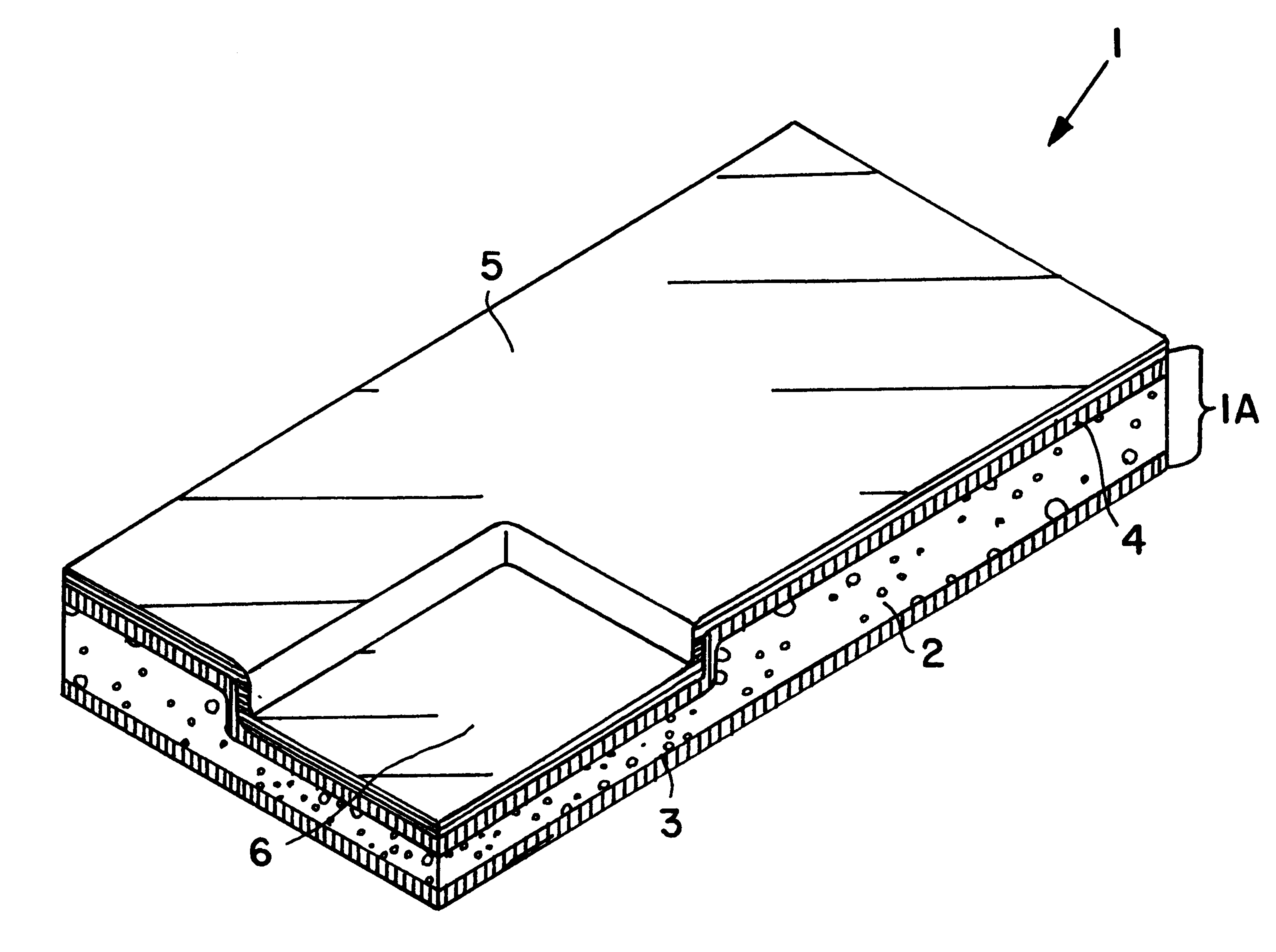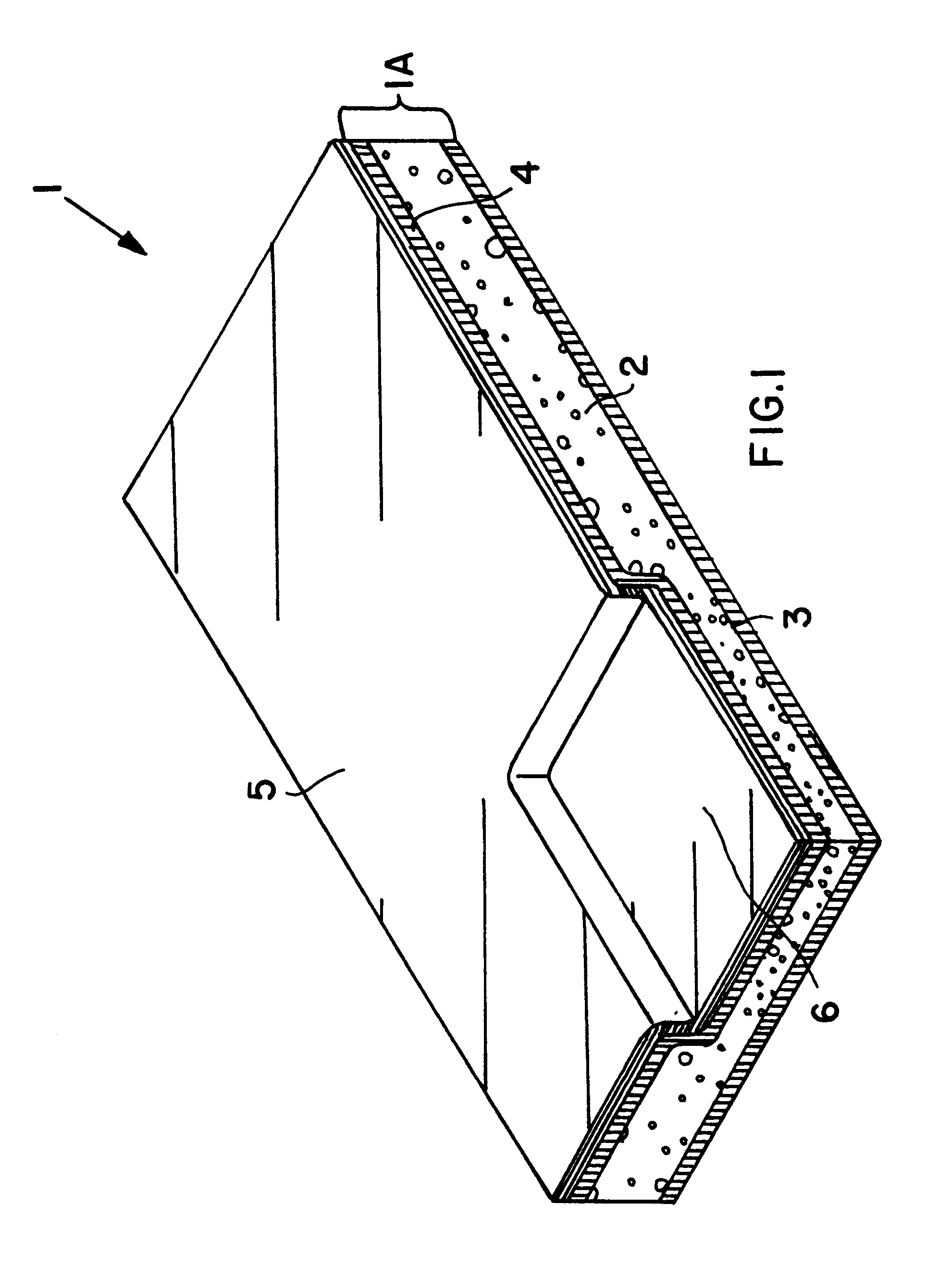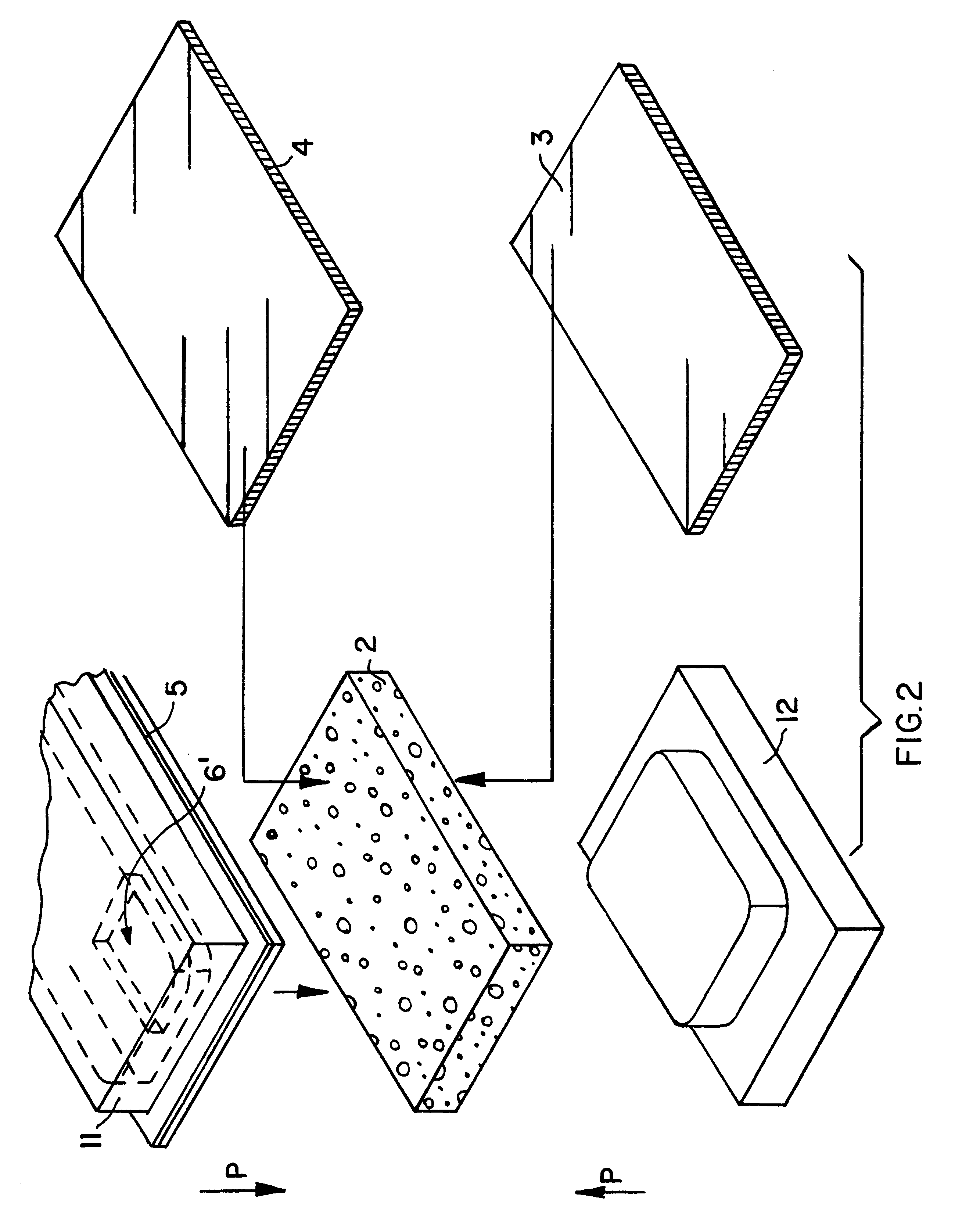Composite structural panel with thermoplastic foam core and natural fibers, and method and apparatus for producing the same
a technology of thermoplastic foam core and composite structural panels, which is applied in the direction of transportation and packaging, synthetic resin layered products, packaging, etc., can solve the problems of difficult and complicated glass fiber material handling, requiring substantial handling effort, and affecting the quality of the composite structural panel
- Summary
- Abstract
- Description
- Claims
- Application Information
AI Technical Summary
Benefits of technology
Problems solved by technology
Method used
Image
Examples
Embodiment Construction
As shown in FIG. 1, a molded composite structural panel 1 according to the invention includes a three-layered substrate 1A, with a cover sheet 5 laminated thereon. The three-layered substrate 1A includes a thermoplastic foam core 2, which preferably comprises a polyolefin foam, more preferably comprises polyethylene and / or polypropylene foam, and most preferably consists of a substantially rigid expanded cellular polypropylene foam. The foam core 2 is sandwiched and laminated between a first outer layer 3 and a second outer layer 4, which each respectively comprise natural fibers and a thermoplastic matrix material. The natural fibers are most preferably kenaf fibers, and the thermoplastic matrix material is preferably a polyolefin, more preferably polypropylene and / or polyethylene, and most preferably consists of polypropylene fibers that have been partially melted to result in a structure of remaining polypropylene fibers and natural fibers embedded in a melted polypropylene matri...
PUM
| Property | Measurement | Unit |
|---|---|---|
| thickness | aaaaa | aaaaa |
| temperature | aaaaa | aaaaa |
| temperature | aaaaa | aaaaa |
Abstract
Description
Claims
Application Information
 Login to View More
Login to View More - R&D
- Intellectual Property
- Life Sciences
- Materials
- Tech Scout
- Unparalleled Data Quality
- Higher Quality Content
- 60% Fewer Hallucinations
Browse by: Latest US Patents, China's latest patents, Technical Efficacy Thesaurus, Application Domain, Technology Topic, Popular Technical Reports.
© 2025 PatSnap. All rights reserved.Legal|Privacy policy|Modern Slavery Act Transparency Statement|Sitemap|About US| Contact US: help@patsnap.com



